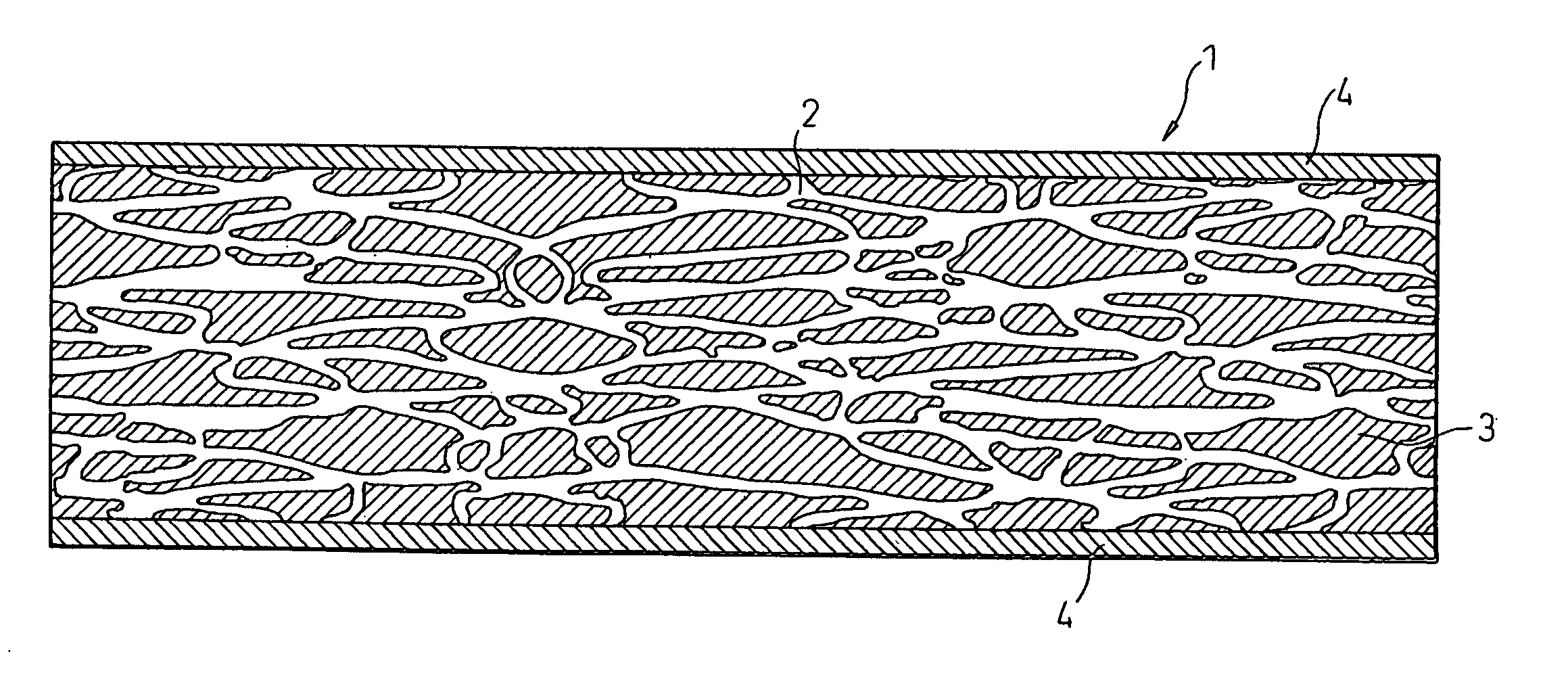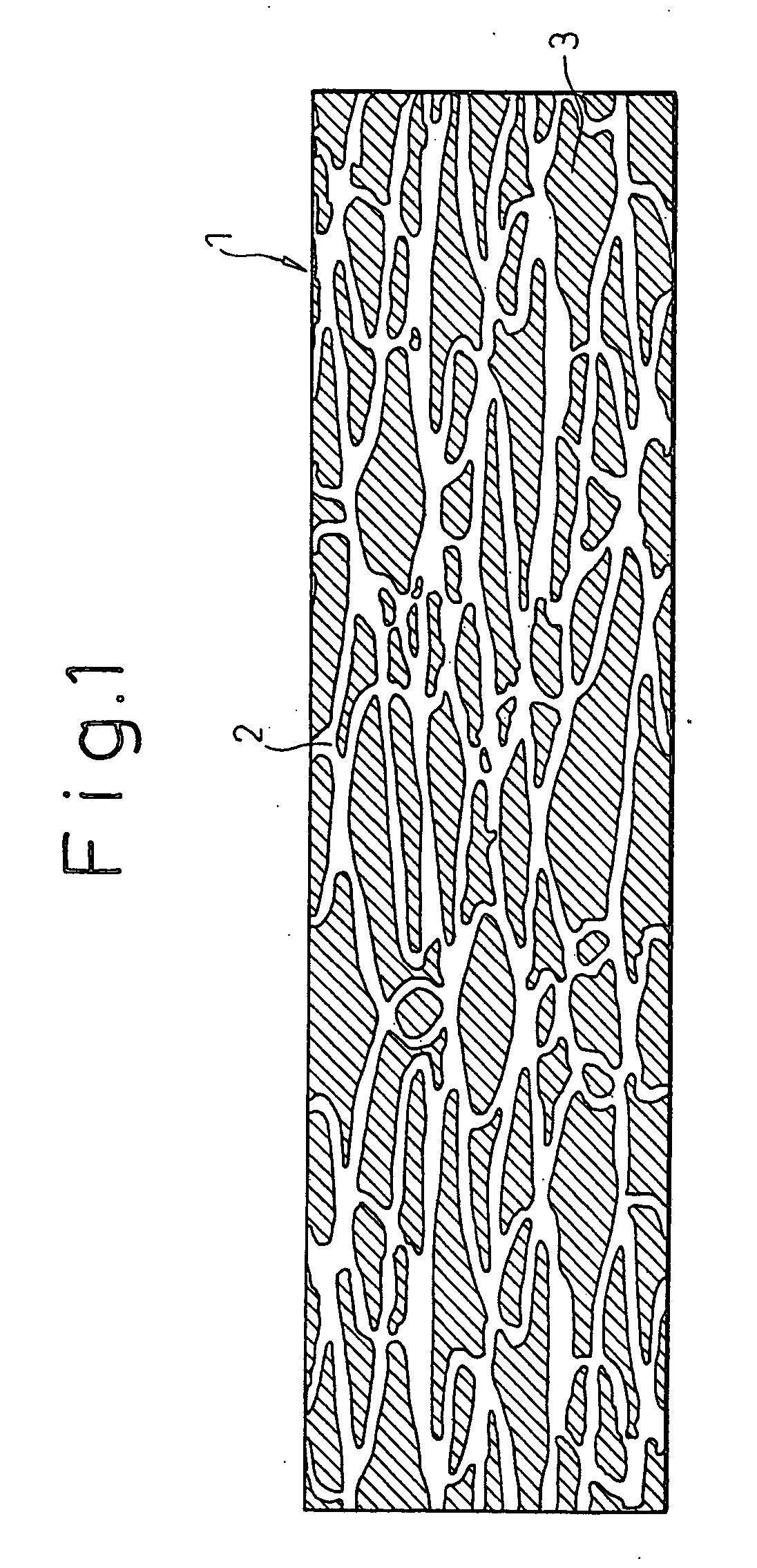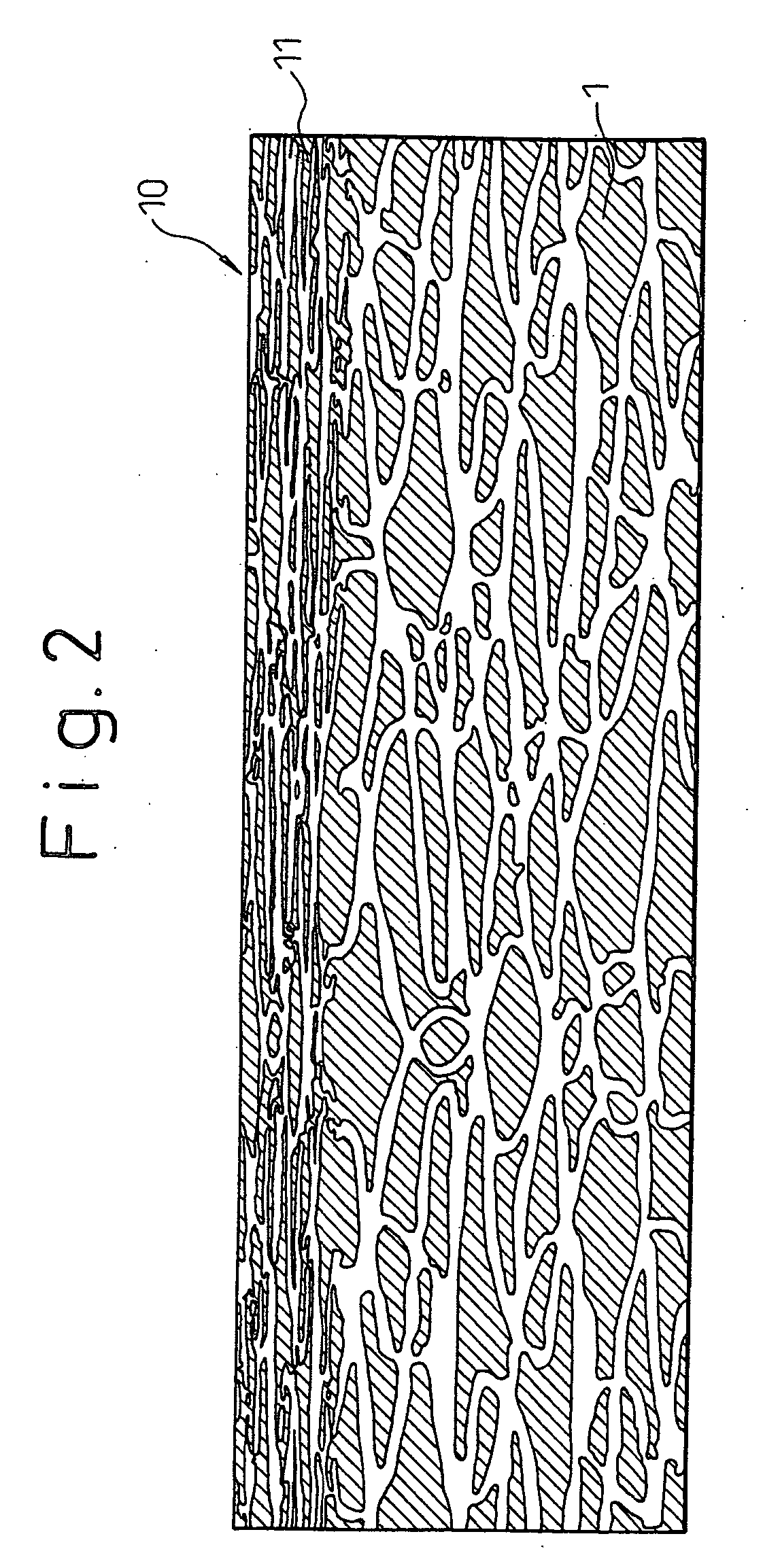Porous insulating film and its laminates
- Summary
- Abstract
- Description
- Claims
- Application Information
AI Technical Summary
Benefits of technology
Problems solved by technology
Method used
Image
Examples
example 1
[0121] Using S-BPDA as the tetracarboxylic acid component and DADE as the diamine component, these were dissolved in NMP with the DADE at a molar ratio of 0.994 with respect to the S-BPDA and the monomer components at a total weight of 10 wt %, and was polymerized at a temperature of 40° C. for 6 hours to obtain a polyimide precursor. The solution viscosity of the polyimide precursor solution was 500 poises.
[0122] The resulting polyimide precursor solution was cast onto a glass substrate to a thickness of about 75 μm, and then the surface thereof was covered with a polyolefin fine porous film (product of Ube Kosan, KK.) having a resistance to passage of air of 550 sec / 100 cc as a solvent substitution rate adjustor, without producing wrinkles. The laminate was immersed in methanol for 5 minutes and subjected to solvent substitution with the solvent substitution rate adjustor for precipitation of and pore formation in the polyimide precursor.
[0123] The precipitated polyimide precurs...
example 2
[0125] Using s-BPDA as the tetracarboxylic acid component and p-PDA as the diamine component, these were dissolved in NMP with the p-PDA at a molar ratio of 0.994 with respect to the s-BPDA and the monomer components at a total weight of 15 wt %, and polymerization was conducted at a temperature of 40° C. for 6 hours to obtain a polyimide precursor. The solution viscosity of the polyimide precursor solution was 500 poise.
[0126] The resulting polyimide precursor solution was cast onto a glass substrate to a thickness of about 150 μm, and then the surface thereof was covered with a polyolefin fine porous film (product of Ube Kosan, KK.) having a gas permeability of 550 sec / 100 cc as a solvent substitution rate adjustor, without producing wrinkles. The laminate was immersed in methanol for 5 minutes and subjected to solvent substitution with the solvent substitution rate adjustor for precipitation of and pore formation in the polyimide precursor.
[0127] The precipitated polyimide prec...
example 3
[0129] Using S-BPDA as the tetracarboxylic acid component and a preparation of p-PDA and DADE in a molar ratio of 85:15 as the diamine component, these were dissolved in NMP with the diamine component at a molar ratio of 0.994 with respect to the S-BPDA and the monomer components at a total weight of 15 wt %, and was polymerized at a temperature of 40° C. for 6 hours to obtain a polyimide precursor. The solution viscosity of the polyimide precursor solution was 600 poises.
[0130] The resulting polyimide precursor solution was cast onto a glass substrate to a thickness of about 150 μm, and then the surface thereof was covered with a polyolefin fine porous film (product of Ube Kosan, KK.) having a resistance to passage of air of 550 sec / 100 cc as a solvent substitution rate adjustor, without producing wrinkles. The laminate was immersed in methanol for 5 minutes and subjected to solvent substitution with the solvent substitution rate adjustor for precipitation of and pore formation in...
PUM
| Property | Measurement | Unit |
|---|---|---|
| Temperature | aaaaa | aaaaa |
| Temperature | aaaaa | aaaaa |
| Length | aaaaa | aaaaa |
Abstract
Description
Claims
Application Information
 Login to View More
Login to View More - R&D
- Intellectual Property
- Life Sciences
- Materials
- Tech Scout
- Unparalleled Data Quality
- Higher Quality Content
- 60% Fewer Hallucinations
Browse by: Latest US Patents, China's latest patents, Technical Efficacy Thesaurus, Application Domain, Technology Topic, Popular Technical Reports.
© 2025 PatSnap. All rights reserved.Legal|Privacy policy|Modern Slavery Act Transparency Statement|Sitemap|About US| Contact US: help@patsnap.com



